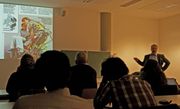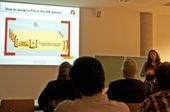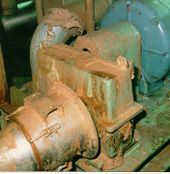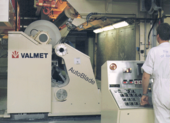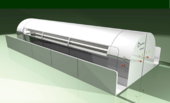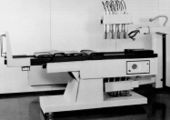Difference between revisions of "Adapted Product and Service Design – How to Work Together for a Sustainable Future?"
***** (***** | *****) m |
***** (***** | *****) |
||
| Line 1: | Line 1: | ||
| − | {| cellspacing="3" cellpadding="5" border="0" style="font-size: 13.63636302947998px; width: 800px | + | {| cellspacing="3" cellpadding="5" border="0" style="font-size: 13.63636302947998px; width: 800px" |
|- | |- | ||
| − | | style="width: 16px | + | | style="width: 16px" | <span style="color: rgb(192, 0, 0); line-height: 21px"></span><span style="color: rgb(192, 0, 0); line-height: 21px">►</span> |
| − | | style="width: 749px | + | | style="width: 749px" | '''[[Energy in Development - Lecture Series|Back to the Lecture Series: Energy in Development]]'''<br/> |
|} | |} | ||
| Line 50: | Line 50: | ||
No matter if process lines, hobby equipment or health care, there is always some space for different design. | No matter if process lines, hobby equipment or health care, there is always some space for different design. | ||
| + | |||
| + | |||
| + | = The Microenergy PSS Approach = | ||
| + | |||
| + | == What is a PSS – Insights from Literature == | ||
| + | |||
| + | == What is a PSS in the Microenergy Sector? == | ||
| + | |||
| + | == How to design a PSS in the Microenergy Sector == | ||
| + | |||
| + | ==Design Results == | ||
| + | |||
| + | = References = | ||
| + | |||
| + | [[Category:Conference_Documentation]] | ||
| + | [[Category:University]] | ||
| + | [[Category:Energy_Use]] | ||
| + | [[Category:Energy_Efficiency]] | ||
| + | [[Category:Energy_Access]] | ||
| + | [[Category:Sustainability]] | ||
[[Category:Microenergy_Systems]] | [[Category:Microenergy_Systems]] | ||
| − | |||
| − | |||
| − | |||
| − | |||
| − | |||
| − | |||
Revision as of 16:09, 17 December 2013
| ► | Back to the Lecture Series: Energy in Development |
Presentations
Introduction
Technological features are not the only important part of successful energy systems. This session focused on the design of technology - not only on the look of a charge controller but the whole system needed.
To get an overview on this topic two lecturers introduced their perspective on the design question. Prof. Kalevi Ekman from Finland is founder of the Aalto University Design Factory and gave an general idea of what especially engineers should know about design. Noara Kebir is the Managing Director and co-founder of MicroEnergy International, a company specialized in supporting financial institutions to develop and implement energy specific programs. She gave a more detailed insight into the role of design in microenergy solutions.
Perspectives to Design
Prof. Ekman likes to pose questions. Think about this one:
What is design?
The usual picture in our minds is one of fancy, expensive and useless artefacts such as tableware or vases. If you think a little longer business-to-customer products as mobile phones and cameras might come to our minds. Design as a measure to be competitive on the market.
The design quality seems to be hard to put a finger on. Normally, engineers work with matriceses to calculate e.g. the price per kilogram of a number of products. Let's compare some numbers: A steak could cost some 20€ per kg in Finland. Another everyday product in the land o the woods is paper which costs less than 1 €/kg. To get a little closer into the topic of energy, what about a wind mill? It costs about 1.5 million euros/300 tons. So it`s price per kilogram is somewhere around 5€. The before mentioned camera comes at 1,000 €/kg and a light weight pair of glasses at 180 € per 1.8 grams, which makes 180,000 €/kg.
We obviously don't pay according to the weight of a product. To get a closer idea of what design means, Prof. Ekman presented different objects.
- Calendering machine: This machine is used in the paper making process to improve the quality of a sheet of paper. The quality can either be improved by "ironing" the sheet in a process comparable to the ironing of cloth that you might - or might not - know. The surface can also be coated by a machine which combines engineering knowledge in pneumatics, electronics and other disciplines. The first generation shows how different disciplines are meshed together into one pot. Dust and cables are everywhere. The second generation already looks different. It is designed for easier operability, cleaning and maintenance. The third generation has some resemblance with a spacecraft. No moisture or dust comes in or out. For maintenance only one big piece has to be taken away. Maintenance though can not performed by any operator but by specialists only.
- Cars: Dacia, Renault, BMW - all these producers offer different car types but what is the same in their advertisements: sure all cars have four wheels and provide the same functionability but what is most striking is that they all use aluminium wheels. That is not how cars are equipped in the shops. There you usually find steel wheels. Aluminium wheels are used in advertisements because of aesthetics nothing else.
- Tractors: To compare the outside of tractors doesn't really reveal the stunning changes in this product line. The real difference is inside. As farmers spend up till 16 hours in the tractor cabin in the main season media, space for food and drinks and a lot of information technology has been added.
- Mixer: The Kenwood Design hasn't nearly changed. It still looks quite the way it did in the 50s. But obviously there is a difference between now and then: The advertisement has no the happy housewife in focus with her supporting husband standing behind her.
- Medical machine: Another question for you: Could you easily go under this machine? If not, you have probably not been raised in the 70s because it was then this machine got awarded for it's appealing design.
- Power suit: In the introducing picture you can see Prof. Ekman pointing on a curious slide. It shows the power suit developed for a nurse to pneumatically support her to lift a patient. The article publishing this picture says the design of the prototype is not yet user friendly. Well, that is obvious but at this point, according to Prof. Ekman, it is already to late to call for designers.
The main message of this list is:
All artefacts are designed - either by professionals or by well meaning hobbyists.
No matter if process lines, hobby equipment or health care, there is always some space for different design.

